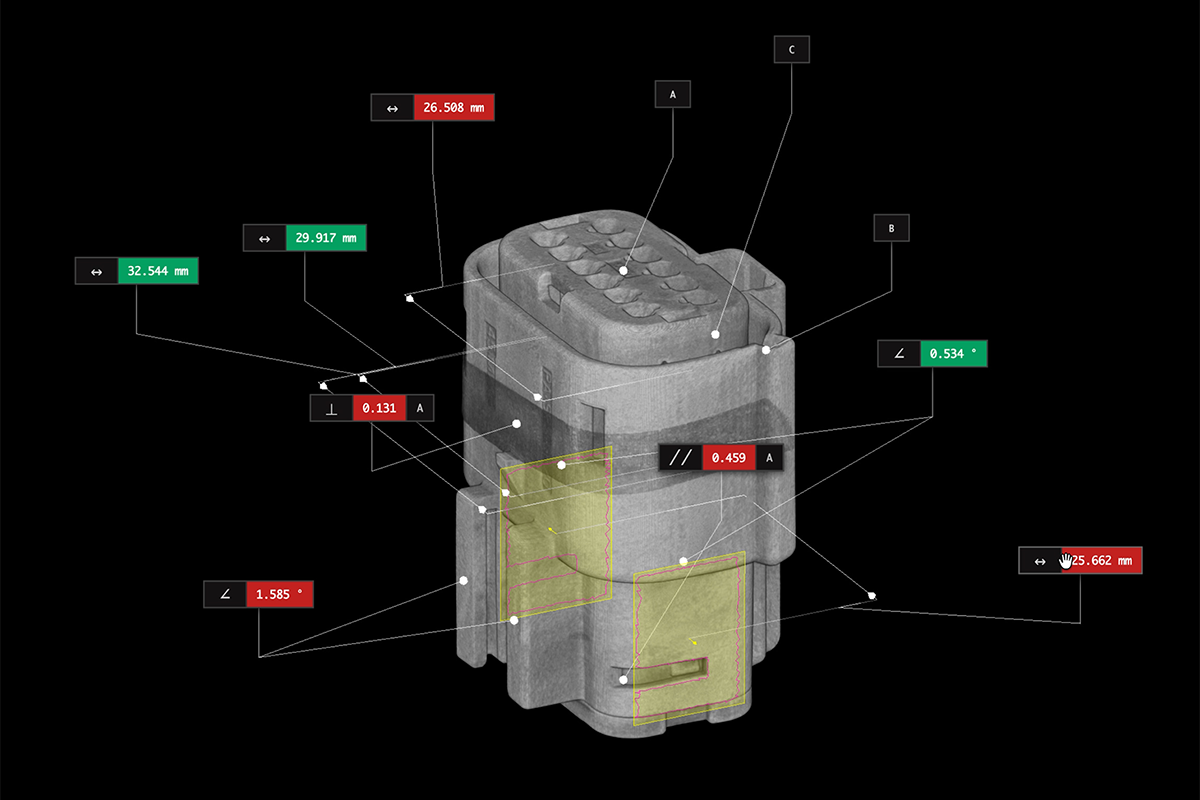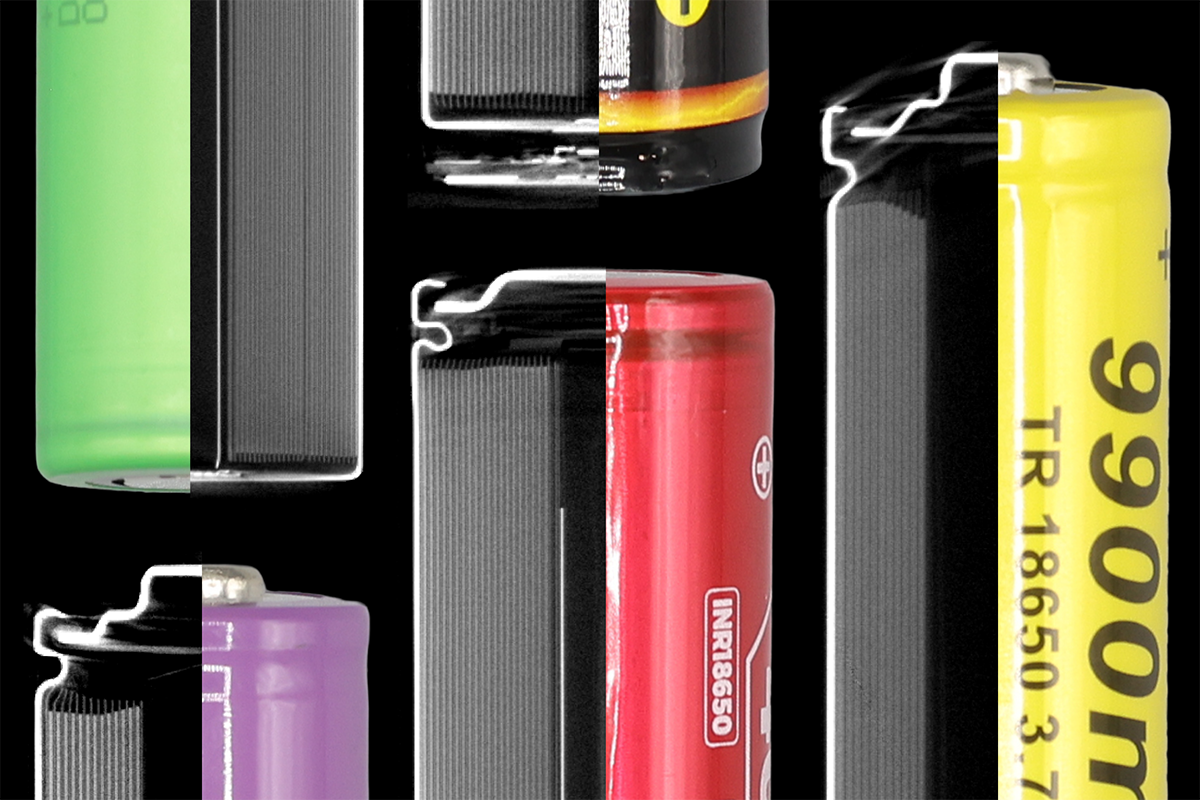Hidden wonders of holiday lights
Holiday illumination runs the gamut from candles and cozy fireplaces to programmable lights synced with music. Thomas Edison himself hung the first strand of electric lights outside his laboratory for Christmas in 1880. Today, these seemingly simple and mass-produced devices have become an integral part of our holiday traditions. We usually only wonder how they work when one burns out, and their ingenious mechanisms remain locked away inside the tiny bulbs. But with a microfocus industrial X-ray CT scanner, we can unwrap the complex engineering hiding inside.
Incandescent bulb
The classic incandescent bulb glows when electric current flows through its tungsten filament, turning it white-hot. These bulbs are wired in series, which reduces household voltage enough to run through thin filaments in small bulbs. The downside of this design is that a single burned-out bulb would break the entire circuit and make the entire string of lights go dark.

To avoid this, each bulb has a bypass mechanism. Inside this light bulb we find a delicate shunt wire, just 0.07mm in diameter (roughly 41 AWG), wrapped around the two filament leads. It’s initially coated with an insulating substance. If the filament burns out, the insulating coat on the shunt wire melts, turning it into a conductor that keeps the circuit closed and allows the rest of the string of lights to continue shining.
Blinker bulb
If you replace one of the lights in your incandescent string with a red-tipped blinker bulb, the entire strand will blink. The remarkably simple, entirely mechanical design consists of a bimetallic strip made of two different metals with different thermal expansion properties. When electric current flows through the leaf, it heats up and bends away from its contact, breaking the circuit and causing the light to turn off. As the strip cools, it straightens, reconnecting the circuit and turning the lights back on. This cycle repeats and produces the mesmerizing twinkling effect, all in under a second. In our microfocus CT scan of the blinker bulb, we see a tightly coiled lead that remains connected to the leaf as it moves, the small bimetallic strip responsible for the blinking action, and the static side of the switch that the leaf touches when it’s cool.

Explore the scan
LED bulb
LED bulbs offer an energy-efficient alternative to traditional incandescent lights, and they can be programmed to create dynamic displays. LED stands for Light Emitting Diode, a semiconductor device. An LED is not a chip in the traditional sense, like a microprocessor or integrated circuit used in computers. Instead, it’s a semiconductor diode designed to emit light when an electric current passes through it.
This LED consists of a chip of semiconducting material impregnated, or doped, with impurities to create a p-n junction. As current flows through the junction, it emits photons, resulting in light. At the tip of the bulb, microfocus industrial CT allows us to inspect the small wires inside the LED assembly that connect the semiconductor die to the bulb's electrical contacts. It’s this miniature wonder that helps us illuminate our celebrations.

Bubble light
Nostalgic bubble lights typically consist of a glass tube filled with a liquid containing a small amount of methylene chloride, which has a low boiling point. When the light is turned on, an incandescent bulb below the tube generates both light and heat, causing the liquid to boil and produce bubbles. The methylene chloride vapor inside the bubbles is illuminated by the bulb, producing a warm glow. But beware, methylene chloride is toxic; it converts to carbon monoxide in the body. One broken bulb won’t necessarily poison you, but be sure to handle these lights with care.

Explore the scan
Fused AC plug
The shunted design of the incandescent bulb could lead to a serious cascading failure. As bulbs start to burn out, the remaining bulbs begin to carry more current at higher voltage, leading them to burn out faster, accelerating the failure process and rapidly increasing the amount of power flowing through the string.
The fused AC plug is the unsung hero of holiday lighting, preventing a rapid failure that would otherwise turn a string of holiday lights into a red-hot Christmas tree igniter.

Explore the scan
Conclusion
It’s easy to forget how a simple glimmer on a Christmas tree contains an entire world of intricate design. Whether you’re building electronic marvels or just appreciating the warmth they bring to your holiday celebrations, industrial CT is there to illuminate the engineering behind the light.










